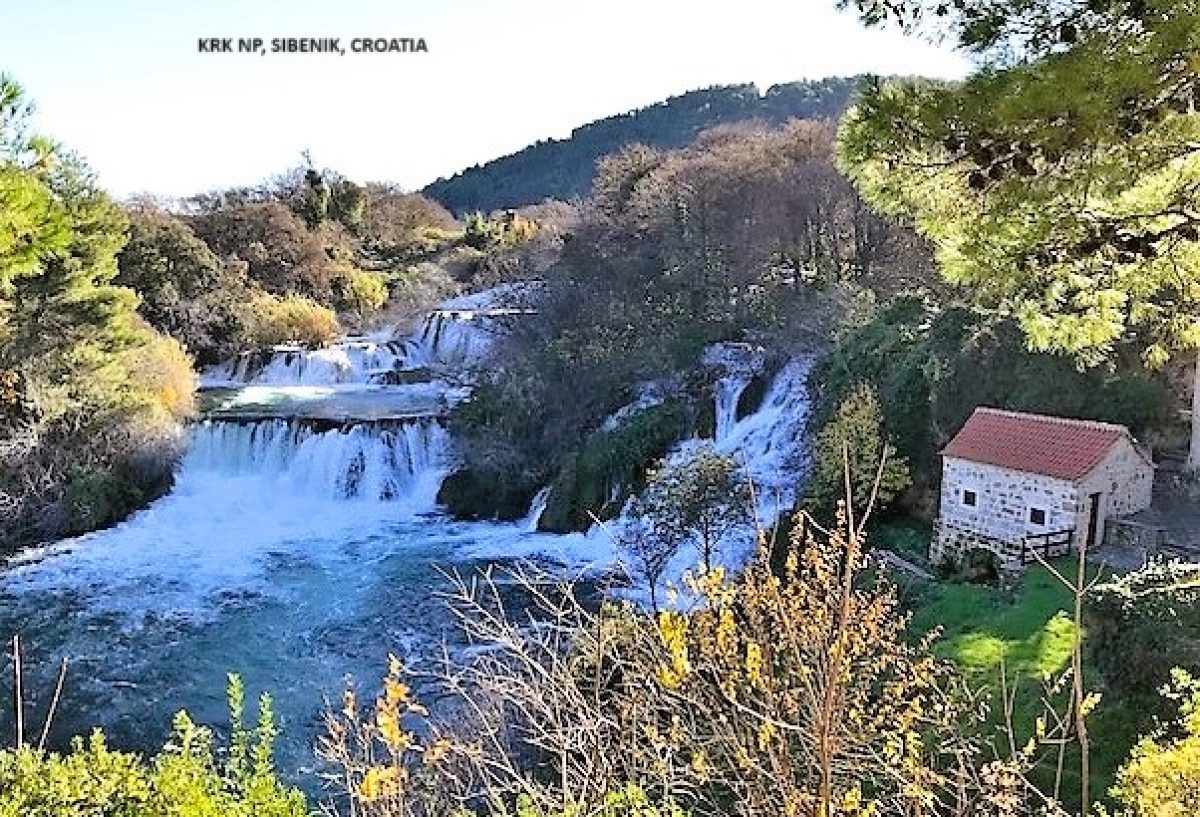We took the coast road from Zumaia to Zarautz stopping at Getaria on the way. We’d passed through Getaria the day before (after I’d missed the turn off to our campsite in Zumaia) and the small town looked most appealing … and certainly worth revisiting.
We parked on the western edge of Zumaia, just above the smaller of the town’s two beaches (Gaztetape Beach), and then walked up towards the town centre which is dominated by a monument to Juan Sebastian Elkano (1487-1526). Until then I’d never heard of Elkano but he is a most fascinating character and fully deserving of the monument. It was Elkano and not, as I once thought, Magellan who first circumnavigated the globe. Elkano was captain of one of the five ships that in 1519 formed Magellan’s fleet in the search for a western passage to the Spice Islands and it was Elkano who in 1522 brought the sole remaining ship (the Victoria) back to Spain long after Magellan was killed somewhere in the Philippines (1521). I’ve subsequently watched a Spanish TV Series, ‘Boundless’, which tells Elkano’s story in a very engrossing manner (although I couldn’t testify as to it’s historical accuracy).


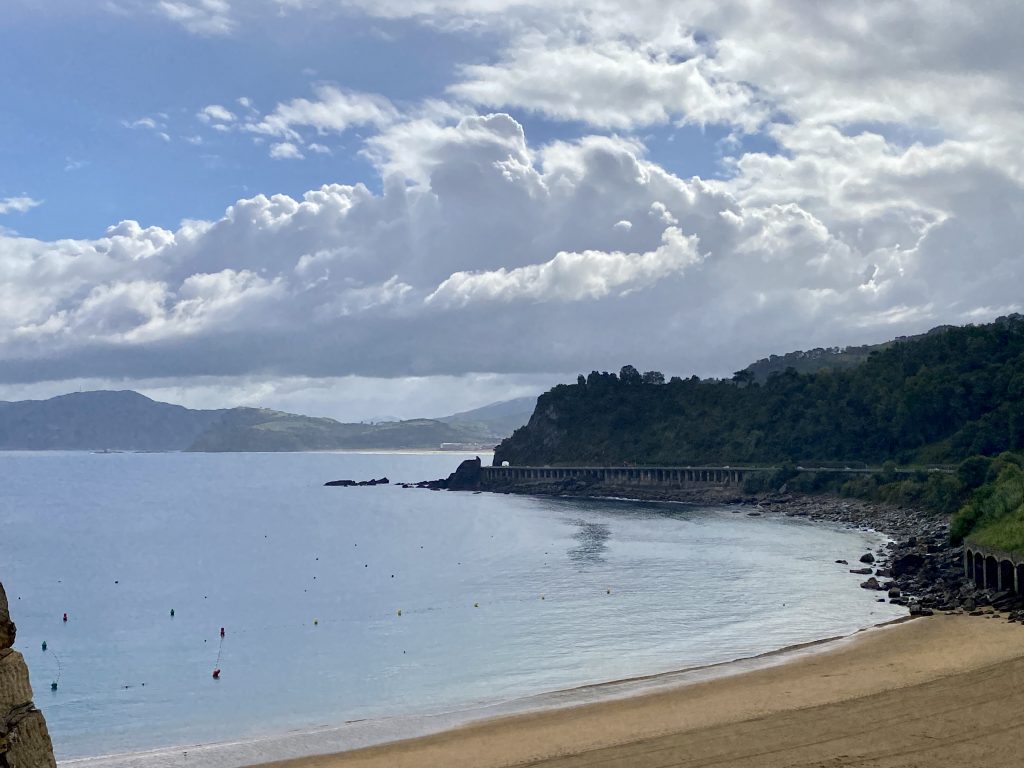
Another famous son of Getaria is the fashion designer Cristobal Balenciaga (1895-1972) whom Christian Dior described as “the master of us all” and whose brand was ultimately taken over by Gucci. A museum dedicated to Balenciaga was opened in Getaria in 2011. I didn’t go in (it’s not quite my cup of tea) but it supposedly rotates some 1,000 of Balenciaga’s creations.
Having checked out the Elkano Monument, Vanya and I made our way down the main street (Nagusia Kalea) of this quaint medieval fishing and whaling village towards the Church of San Salvador. There are a number of pintxos bars on the main street where we could have taken brunch but, from the monument, I had seen a couple of bars on the harbour and thought to eat there and; besides, I wanted a look inside the church.
There’s been a church on this site since the 13th century but this particular church dates mostly from the 15th and 16th centuries (except for some 19th century restoration work to fire damage caused during the Carlist Wars). There’s an attractive upper gallery inside the church on which a choir was practising as I entered. They were seriously good and I had to tear myself away to rejoin Vanya and the dogs waiting outside on Nagusia Kalea.
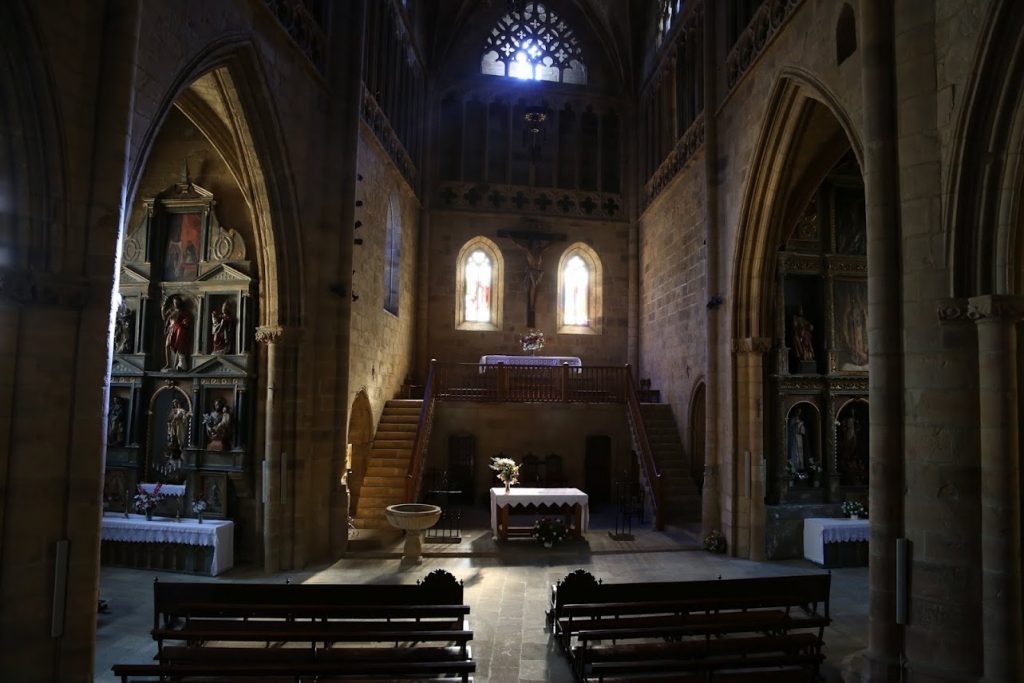
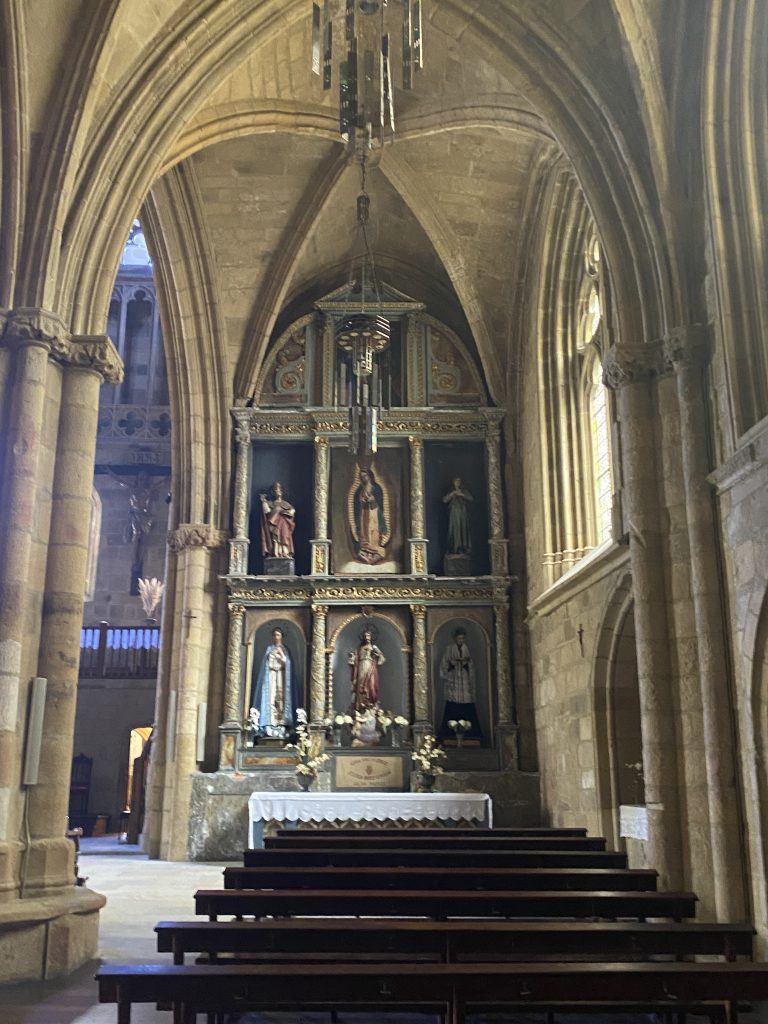
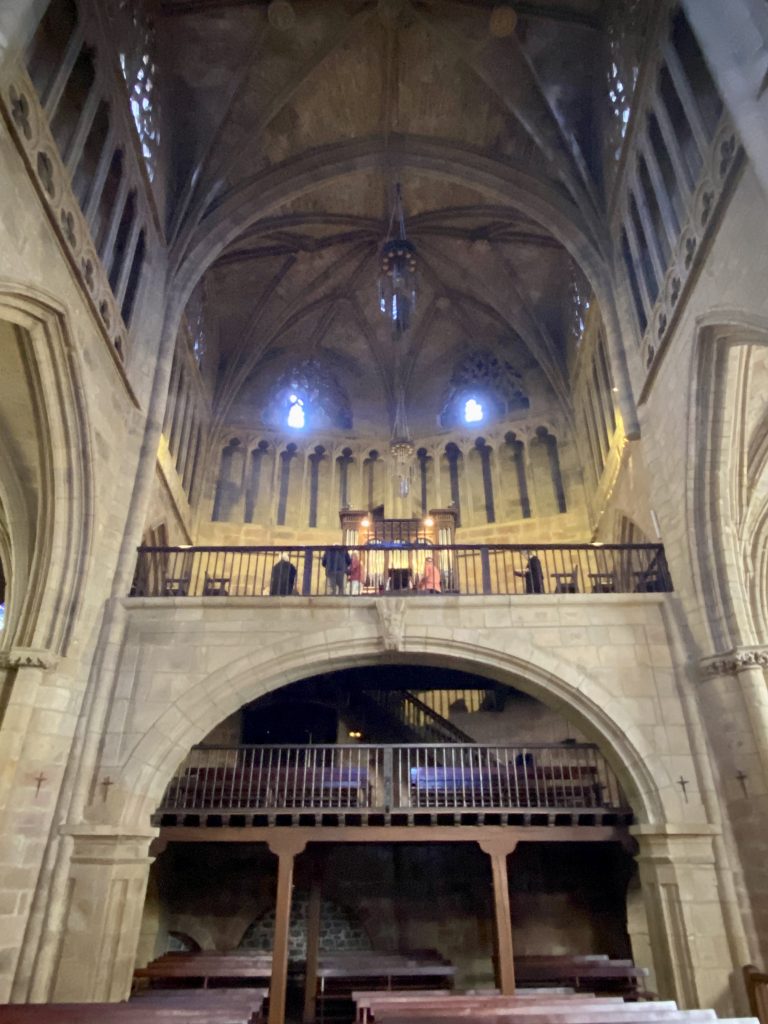
We followed the main street on through a narrow tunnel (the Katropana Tunnel) which goes under the church and past a small crypt to the harbour. It was time to eat.
After eating and checking out the harbour area we walked the dogs back to the Van and then I retraced my steps to the far end of the harbour and up the small mouse shaped hill grandly referred to as Mount San Anton but better known by the locals as ‘The Mouse of Getaria’. Mount San Anton was originally a small island with a lighthouse (Faro de Getaria) and a gun emplacement which was last used in earnest during the Spanish Civil War. The lighthouse is still working but the gun emplacement serves now only as a viewpoint.


It occurs to me that I have not yet mentioned food and/or drink in any detail. That needs to be corrected because this area is famous for txacoli (sometimes called txakolilocal) and it’s seafood. Txacoli is a traditional Basque white wine, slightly sparkling and very dry, made with the local grape, Hondarrabi Zuri. The wine goes very well with the local fish; talking of which, the ‘Elkano’ is a Michelin Star Restaurant in Getaria which specialises in chargrilled fish. Next time.

